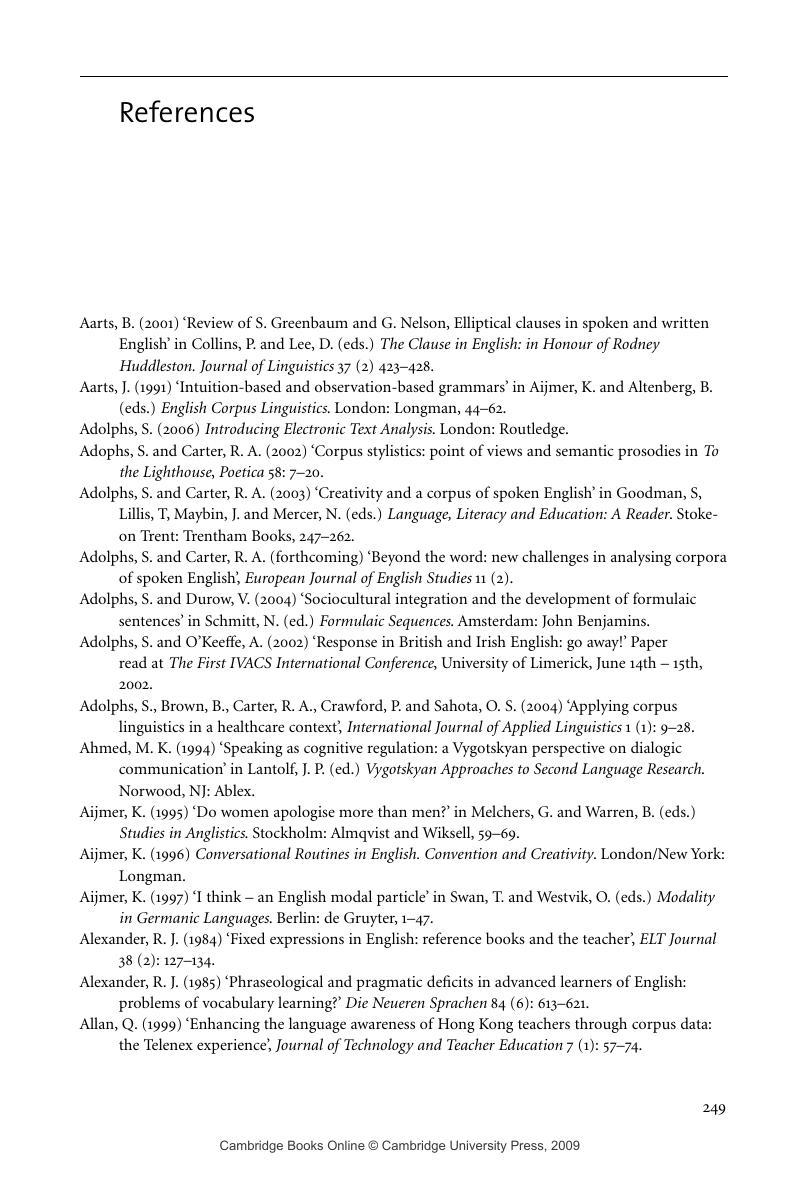Book contents
- Frontmatter
- Acknowledgements
- Contents
- Preface
- 1 Introduction
- 2 Establishing basic and advanced levels in vocabulary learning
- 3 Lessons from the analysis of chunks
- 4 Idioms in everyday use and in language teaching
- 5 Grammar and lexis and patterns
- 6 Grammar, discourse and pragmatics
- 7 Listenership and response
- 8 Relational language
- 9 Language and creativity: creating relationships
- 10 Specialising: academic and business corpora
- 11 Exploring teacher corpora
- Coda
- References
- Appendix 1
- Appendix 2
- Appendix 3
- Author index
- Subject index
- Publisher's acknowledgements
- References
References
Published online by Cambridge University Press: 23 December 2009
- Frontmatter
- Acknowledgements
- Contents
- Preface
- 1 Introduction
- 2 Establishing basic and advanced levels in vocabulary learning
- 3 Lessons from the analysis of chunks
- 4 Idioms in everyday use and in language teaching
- 5 Grammar and lexis and patterns
- 6 Grammar, discourse and pragmatics
- 7 Listenership and response
- 8 Relational language
- 9 Language and creativity: creating relationships
- 10 Specialising: academic and business corpora
- 11 Exploring teacher corpora
- Coda
- References
- Appendix 1
- Appendix 2
- Appendix 3
- Author index
- Subject index
- Publisher's acknowledgements
- References
Summary

- Type
- Chapter
- Information
- From Corpus to ClassroomLanguage Use and Language Teaching, pp. 249 - 283Publisher: Cambridge University PressPrint publication year: 2007



